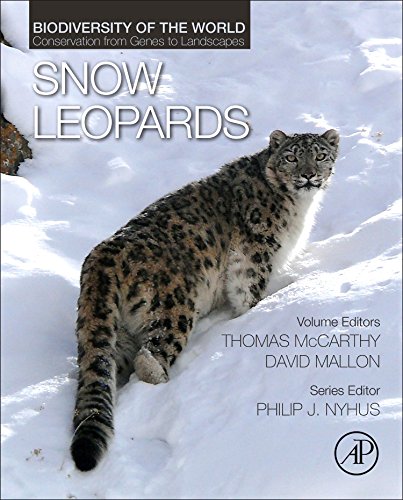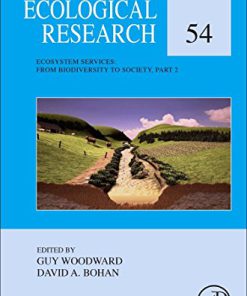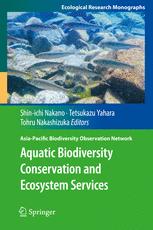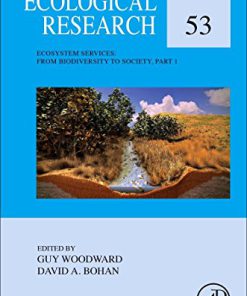Snow Leopards Biodiversity of the World Conservation from Genes to Landscapes 1st Edition by Tom Mccarthy 0128024966 9780128024966
$50.00 Original price was: $50.00.$25.00Current price is: $25.00.
Snow Leopards Biodiversity of the World Conservation from Genes to Landscapes 1st Edition by Tom Mccarthy – Ebook PDF Instant Download/DeliveryISBN: 0128024966, 9780128024966
Full download Snow Leopards Biodiversity of the World Conservation from Genes to Landscapes 1st Edition after payment.

Product details:
ISBN-10 : 0128024966
ISBN-13 : 9780128024966
Author: Tom Mccarthy
Snow Leopards: Biodiversity of the World: Conservation from Genes to Landscapes is the only comprehensive work on the biology, behavior, and conservation status of the snow leopard, a species that has long been one of the least studied, and hence poorly understood, of the large cats.
Breakthroughs in technologies and methodologies to study this elusive cat have come rapidly, including non-invasive genetics, camera traps, and GPS-satellite collaring. The book begins with chapters on the genetic standing and taxonomy of the snow leopard, followed by chapters on their behavior and ecology. Additional contributions follow on the current and emerging threats to the species, which include longstanding concerns, such as poaching and conflicts with livestock, and new and emerging threats such as mining and climate change.
Snow Leopards Biodiversity of the World Conservation from Genes to Landscapes 1st table of contents:
I: Defining the snow leopard
Chapter 1: What is a Snow Leopard? Taxonomy, Morphology, and Phylogeny
Abstract
Introduction
Taxonomic history and geographical variation
Fossil record
Phylogeny
Morphological adaptations
Conclusions
Chapter 2: What is a Snow Leopard? Behavior and Ecology
Abstract
Introduction
General physical characteristics
Behavior
Ecology and habitat
Chapter 3: What is a Snow Leopard? Biogeography and Status Overview
Abstract
Introduction
Range-wide assessment meeting (Beijing, China, 2008)
Outputs
Discussion
Chapter 4: Snow Leopard Prey and Diet
Abstract
Introduction
Prey species
Dietary composition
Recent dietary studies
Dietary requirements and offtake rates
Competitors
Conclusions
II: Conservation concerns
Chapter 5: Livestock Predation by Snow Leopards: Conflicts and the Search for Solutions
Abstract
Introduction
Revisiting “human-snow leopard conflicts”
Understanding conflicts over livestock predation
Managing conflicts over livestock predation
Acknowledgment
Chapter 6: Living on the Edge: Depletion of Wild Prey and Survival of the Snow Leopard
Abstract
Introduction
Study areas
Snow leopards and their prey in Sagarmatha National Park
Snow leopards and their prey in Spiti Valley
Implications of wild prey abundance for conservation management of snow leopards
Acknowledgments
Chapter 7: Monitoring Illegal Trade in Snow Leopards (2003–2012)
Abstract
Background
Legal status
Previous TRAFFIC study
Current TRAFFIC study
Results
Recent records of snow leopards in trade (2013–2014)
Conclusions
Chapter 8: Climate Change Impacts on Snow Leopard Range
Abstract
Introduction
Climate change phenomena in snow leopard range
Predicting future impacts of climate change on snow leopard range
Conclusions
Chapter 9: Diseases of Free-Ranging Snow Leopards and Primary Prey Species
Abstract
Introduction
Diseases in free-ranging snow leopards
Diseases in snow leopard natural ungulate prey species
Conclusions
Acknowledgments
Chapter 10: Resource Extraction
Subchapter 10.1: Introduction
Subchapter 10.2: Emerging Threats to Snow Leopards from Energy and Mineral Development
Subchapter 10.3: Linear Infrastructure and Snow Leopard Conservation
Subchapter 10.4: Harvesting of Caterpillar Fungus and Wood by Local People
Subchapter 10.5: Synthesis
III: Conservation solutions in situ
Chapter 11: The Role of Mountain Communities in Snow Leopard Conservation
Abstract
Introduction
A brief overview of community involvement in snow leopard conservation
Rationale for adopting community-based biodiversity protection and management models in snow leopard range countries
Improving snow leopard conservation
Conclusions
Acknowledgments
Chapter 12: Building Community Governance Structures and Institutions for Snow Leopard Conservation
Abstract
The case for governance and snow leopard conservation
Conservation and good governance: land tenure and representation
Building governance institutions
Early support for new governance institutions
Completing the circle: building linkages and comanagement processes with government
Conclusions
Chapter 13: Incentive and Reward Programs in Snow Leopard Conservation
Subchapter 13.1: Himalayan Homestays: Fostering Human-Snow Leopard Coexistence
Subchapter 13.2: Handicrafts: Snow Leopard Enterprises in Mongolia
Subchapter 13.3: A Review of Lessons, Successes, and Pitfalls of Livestock Insurance Schemes
Chapter 14: Livestock Husbandry and Snow Leopard Conservation
Subchapter 14.1: Corral Improvements
Subchapter 14.2: The Role of Village Reserves in Revitalizing the Natural Prey Base of the Snow Leopard
Subchapter 14.3: The Ecosystem Health Program: A Tool to Promote the Coexistence of Livestock Owners and Snow Leopards
Chapter 15: Religion and Cultural Impacts on Snow Leopard Conservation
Subchapter 15.1: Introduction
Subchapter 15.2: Tibetan Buddhist Monastery-Based Snow Leopard Conservation
Subchapter 15.3: Shamanism in Central Asian Snow Leopard Cultures
Subchapter 15.4: Snow Leopards in Art and Legend of the Pamir
Subchapter 15.5: The Snow Leopard in Symbolism, Heraldry, and Numismatics: The Order “Barys” and Title “Snow Leopard”
Chapter 16: Trophy Hunting as a Conservation Tool for Snow Leopards
Subchapter 16.1: The Trophy Hunting Program: Enhancing Snow Leopard Prey Populations Through Community Participation
Subchapter 16.2: Argali Sheep (Ovis ammon) and Siberian Ibex (Capra sibirica) Trophy Hunting in Mongolia
Subchapter 16.3: Hunting of Prey Species: A Review of Lessons, Successes, and Pitfalls – Experiences from Kyrgyzstan and Tajikistan
Chapter 17: Environmental Education for Snow Leopard Conservation
Abstract
Introduction
What is EE?
Challenges in teaching snow leopard-focused EE
Different approaches to snow leopard EE
Ri Gyancha, India – a school-based approach
Nomadic nature trunks, Mongolia – thinking “outside the BOX”
Snow leopard scouts – environmental camps in two regions of Nepal
Snow leopard day festival, Altai Republic, Russia
Cross-border EE exchanges
Zoos and snow leopard EE
Monitoring and evaluation
From awareness to action
Conclusions
Chapter 18: Law Enforcement in Snow Leopard Conservation
Abstract
Snow leopards – illegal killing and trade
The two ends of the illegal trade market: what must be done?
Protection: a landscape solution and legal strategy
Breaking the chain
Next steps
Chapter 19: Transboundary Initiatives and Snow Leopard Conservation
Abstract
Transboundary conservation and snow leopards
Rationale for transboundary collaboration
The legal framework for transboundary conservation
Challenges in implementing transboundary conservation
Transboundary conservation initiatives and current status of transboundary protected areas
Conclusions
Chapter 20: Corporate Business and the Conservation of the Snow Leopard: Worlds That Need Not Collide
Abstract
Introduction
Business case for conservation
Conclusions
IV: Conservation solutions ex situ
Chapter 21: Role of Zoos in Snow Leopard Conservation: Management of Captive Snow Leopards in the EAZA Region
Abstract
Introduction
Breakthroughs in the 1980s
Goal of the EEP: to maintain a genetically intact population with high gene diversity
Suggestions for improvement
Toward global management
Why keep snow leopards in captivity?
Chapter 22: Role of Zoos in Snow Leopard Conservation: The Species Survival Plan in North America
Abstract
Population management and sustainability
Husbandry
Nutrition
Disease recognition and management
Reproduction
Exhibit design
Education
Collaboration and challenges
Chapter 23: The Role of Zoos in Snow Leopard Conservation: Captive Snow Leopards as Ambassadors of Wild Kin
Subchapter 23.1: Kolmården Wildlife Park: Supporting Snow Leopards in the Wild, Sharing the Message at Home
Subchapter 23.2: Woodland Park Zoo: From a Zoo Came a True Snow Leopard Champion
Subchapter 23.3: Bronx Zoo: Ambassadors from the Roof of the World
Chapter 24: Rescue and Rehabilitation Centers and Reintroductions to the Wild
Subchapter 24.1: Rescue, Rehabilitation, Translocation, Reintroduction, and Captive Rearing: Lessons From Handling the Other Big Cats
Subchapter 24.2: NABU Snow Leopard Rehabilitation Center in Kyrgyzstan
V: Techniques and technologies for the study of a cryptic felid
Chapter 25: Snow Leopard Research: A Historical Perspective
Abstract
In the beginning
Steady march of science
Chapter 26: From VHF to Satellite GPS Collars: Advancements in Snow Leopard Telemetry
Abstract
Introduction
VHF telemetry – the first studies
Argos PTT telemetry
GPS telemetry
Conclusions
Chapter 27: The Role of Genetics
Subchapter 27.1: Conservation Genetics of Snow Leopards
Subchapter 27.2: Diet Reconstruction of Snow Leopard Using Genetic Techniques
Chapter 28: Camera Trapping: Advancing the Technology
Abstract
Conservation and research applications of camera trapping
Analytical advances and study design progress
Analytical advances and future directions
Design considerations and pitfalls
Overview of camera trap technology
Camera trap data management
Future directions in technology
Chapter 29: Landscape Ecology: Linking Landscape Metrics to Ecological Processes
Abstract
Introduction
Scale
Quantifying spatial covariates
Applying landscape ecology to snow leopards
Conclusions
Acknowledgments
VI: Snow leopard status and conservation: regional reviews and updates
Chapter 30: Central Asia: Afghanistan
Abstract
Introduction: historical records and past conservation efforts
Present status of snow leopards in Afghanistan
Current threats to snow leopard populations
Measures to conserve snow leopard in Afghanistan
Conclusions
Acknowledgment
Chapter 31: Central Asia: Kyrgyzstan
Abstract
Snow leopard habitat and distribution
Status of snow leopard prey
Legal protection
Threats to snow leopards in Kyrgyzstan
National Action Plan, the NSLEP, and management plans for protected areas
Transboundary conservation initiatives
NGOs working in Kyrgyzstan on the conservation of snow leopards
Future needs
Chapter 32: Central Asia: Kazakhstan
Abstract
Introduction
Distribution
Population size
Threats
Snow leopard conservation in Kazakhstan
Action plan for snow leopard conservation in Kazakhstan
Chapter 33: Central Asia: Tajikistan
Abstract
Snow leopard habitat in Tajikistan
Status of key prey species
Protected areas where snow leopards occur
Threats to snow leopards in Tajikistan
Legal protection
Future needs and priorities
Chapter 34: Central Asia: Uzbekistan
Abstract
Snow leopard status
Prey species
Existing protected areas and their effectiveness (Chatkal, Gissar, Zaamin)
Planned protected area expansion
Threats
History of the snow leopard national strategy and action plan
Chapter 35: South Asia: Bhutan
Abstract
Introduction
Snow leopard habitat distribution in Bhutan
Threats
Legal status of snow leopard
Snow leopard conservation in Bhutan
Chronology of snow leopard conservation efforts in Bhutan
Future plans
Conclusions
Chapter 36: South Asia: India
Abstract
Snow leopard range in India
State of knowledge
Revising snow leopard population estimates for India
Threats to snow leopards
Conservation efforts in India
The way forward
Chapter 37: South Asia: Nepal
Abstract
Distribution, abundance, and population status
Conservation threats and challenges
Strategies to mitigate conservation threats
Conclusions and next steps forward
Chapter 38: South Asia: Pakistan
Subchapter 38.1: Snow Leopard Conservation in Pakistan: A Historical Perspective
Subchapter 38.2: The Current State of Snow Leopard Conservation in Pakistan
Chapter 39: Northern Range: Mongolia
Abstract
Introduction
Status and threats
The history of snow leopard conservation in Mongolia
Snow leopards in law and policy
Transboundary initiatives
Research, monitoring, and capacity building
Wildlife law enforcement
Legal framework to empower communities to comanagement wildlife and habitat
Future needs to mitigate snow leopard threats
Acknowledgments
Chapter 40: Northern Range: Russia
Abstract
Introduction
Snow leopard-herder conflict mitigation projects
Lessons learned from ANTI-POACHING projects
Conclusions
Chapter 41: China: The Tibetan Plateau, Sanjiangyuan Region
Abstract
Status of snow leopard in Sanjiangyuan Region
The big brother rules?
The making of a flagship species
Coexistence in the “Snow Leopard Landscape”
Chapter 42: China: Current State of Snow Leopard Conservation in China
Abstract
A brief history of the snow leopard In China
Current snow leopard distribution in China
National strategies for snow leopard protection
Conservation goals
Priority areas
Working together: opportunities and actions for international cooperation
What future for snow leopard in China?
Synonyms and local names for snow leopard used in China
VII: The future of snow leopards
Chapter 43: Sharing the Conservation Message
Abstract
Introduction
Communicating conservation messages with the general public
Communicating conservation messages within the scientific community
Communicating the conservation message with government
Conclusions
Chapter 44: Global Strategies for Snow Leopard Conservation: A Synthesis
Abstract
Introduction
Snow leopard strategies
Why conserve snow leopards?
Where to conserve snow leopards?
How to conserve snow leopards?
A strategic synthesis
Chapter 45: The Global Snow Leopard and Ecosystem Protection Program
Abstract
Genesis: how the Global Snow Leopard and Ecosystem Protection Program and the Snow Leopard Initiative were formed
Framework: key principles, structure, and approaches of the Snow Leopard Initiative
Preparation stage and milestones of the GSLEP and Global Forum on Snow Leopard Conservation
The Global Snow Leopard and Ecosystem Protection Program
GSLEP launch, implementation, and information sharing
Chapter 46: Joining up the Spots: Aligning Approaches to Big Cat Conservation from Policy to the Field
Abstract
Introduction
Planning approach for the conservation of large cats
Strategic planning stipulations for the conservation of the snow leopard
Discussion and recommendations: Strategic planning requirements for conservation of the snow leopard
Chapter 47: Future Prospects for Snow Leopard Survival
People also search for Snow Leopards Biodiversity of the World Conservation from Genes to Landscapes 1st:
how do snow leopards help the environment
snow leopard biodiversity
snow leopards biome
snow leopards biggest threats
a snow leopard
Tags: Snow Leopards, Biodiversity, World Conservation, Genes, Landscapes, Tom Mccarthy
You may also like…
Biology and other natural sciences - Ecology
Earth Sciences
Medicine
Neurobiology of Epilepsy From Genes to Networks 1st Edition Elsa Rossignol 0128038861 978-0128038864
Politics & Philosophy - Social Sciences
The Spectacle Of Critique From Philosophy To Cacophony 1st Edition Tom 1351347306 9781351347303












